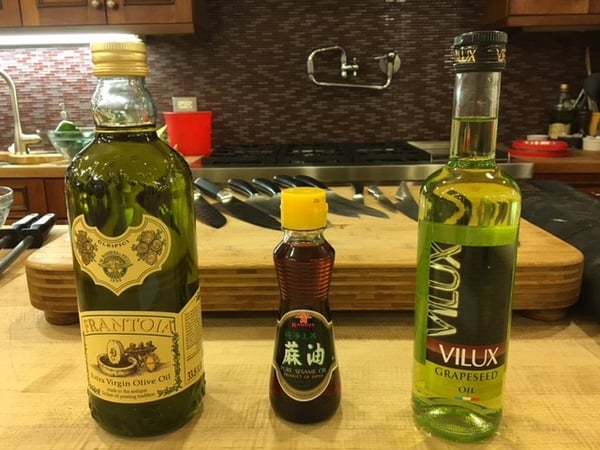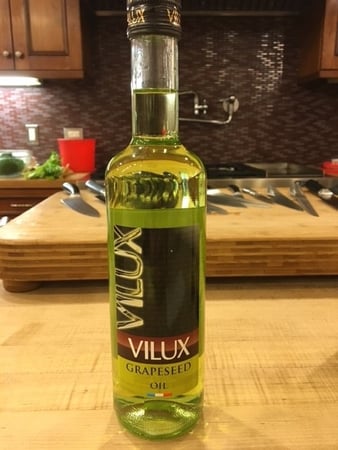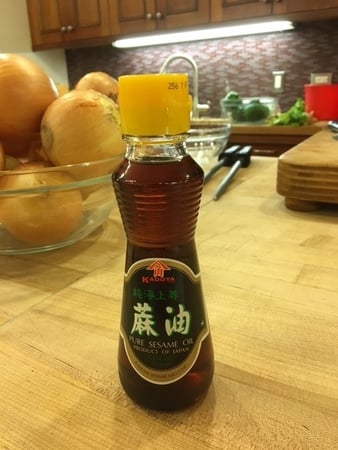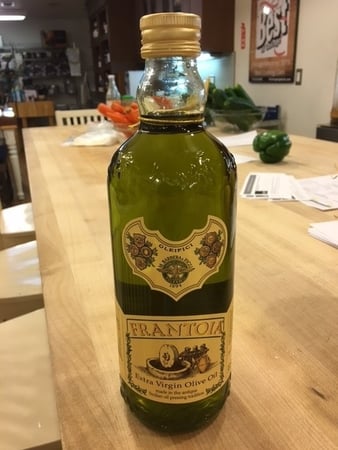Since I started teaching cooking classes at The Chopping Block, one of the most common questions I get from students is why we use two different types of oil to cook with. So I decided to take a little time and research cooking oils in a little more depth to help answer those questions the best that I can. Here is your fast and easy reference to some basic information about cooking oils.
 There are lots of resources out there for this information. You could spend hours delving into the details of oils. I want to present a few quick facts about the most common oils to help guide you in your cooking.
There are lots of resources out there for this information. You could spend hours delving into the details of oils. I want to present a few quick facts about the most common oils to help guide you in your cooking.
There are 3 main points of oil to consider:
- Smoking point
- Flavor
- Health benefits
The “smoking point” of an oil is the temperature at which that particular oil will begin to smoke. When the oil is heated beyond its smoking point, it begins to break down and become bitter tasting. Every cooking fat whether it's oil, butter or lard has a specific smoking point. Choosing the right oil for the job will help a lot. The highest smoking point oils are best for high temperature searing like steaks, chicken breasts, whole roasts that we sear before braising or roasting and even for deep frying. Oils in the mid-range do very well sautéing things like vegetables, shallots, garlic or preparing sauces. The lowest temperature oils are best suited either as a finishing touch to add flavor, like drizzling hazelnut oil on a salad or using EVOO in your bruschetta.
Here is a brief list of the average smoking points of the most common oils.
Safflower - 500F
Light Olive Oil – 460F
Peanut – 450F
Canola – 400F
Grapeseed – 400F
Sesame – 350F
EVOO – 325F
 The next factor is flavor. When choosing an oil to cook with, you want to make sure the flavor compliments the dish you are making. Sesame oil might not be the best flavor to accompany a Bolognese sauce. Oils that are quite neutral in flavor are usually the best choices for searing and sautéing. If you want flavored oils when you cook, use a blend of a higher smoking point neutral oil and the flavored oil you want to cook with. The most neutral flavored oils are Canola, Grapeseed, Safflower and other “vegetable” oils. I use these most often for cooking. Oils like peanut, Sesame, EVOO and other nut oils usually have lots of flavor. I tend to use these at the end to finish a dish or sauce or make a dressing or marinade.
The next factor is flavor. When choosing an oil to cook with, you want to make sure the flavor compliments the dish you are making. Sesame oil might not be the best flavor to accompany a Bolognese sauce. Oils that are quite neutral in flavor are usually the best choices for searing and sautéing. If you want flavored oils when you cook, use a blend of a higher smoking point neutral oil and the flavored oil you want to cook with. The most neutral flavored oils are Canola, Grapeseed, Safflower and other “vegetable” oils. I use these most often for cooking. Oils like peanut, Sesame, EVOO and other nut oils usually have lots of flavor. I tend to use these at the end to finish a dish or sauce or make a dressing or marinade.
 The third consideration is health benefit. There is a lot of information about this specific topic, but the bottom line is, oils that are clear and liquid at room temperature are much healthier than hydrogenated falts like butter and lard. Some oils have much higher concentrations of mono or poly unsaturated fat. EVOO and canola have the highest amount of mono-unsaturated fat; around 65%-75%, making them some of the healthiest oils. In any case, using more cooking oil, whatever the type, in place of butter or other animal fats, will offer the best health results.
The third consideration is health benefit. There is a lot of information about this specific topic, but the bottom line is, oils that are clear and liquid at room temperature are much healthier than hydrogenated falts like butter and lard. Some oils have much higher concentrations of mono or poly unsaturated fat. EVOO and canola have the highest amount of mono-unsaturated fat; around 65%-75%, making them some of the healthiest oils. In any case, using more cooking oil, whatever the type, in place of butter or other animal fats, will offer the best health results.
 We carry several types of oil at The Chopping Block for you to try and experiment with. We also use different oils in almost every cooking class that we offer. In fact, our Culinary Boot Camp is a week-long class that really delves into different types of oils and when and how to use them. We're offering this class at our Lincoln Square location the week of January 18, 2016. Join us and become a fearless cook this year!
We carry several types of oil at The Chopping Block for you to try and experiment with. We also use different oils in almost every cooking class that we offer. In fact, our Culinary Boot Camp is a week-long class that really delves into different types of oils and when and how to use them. We're offering this class at our Lincoln Square location the week of January 18, 2016. Join us and become a fearless cook this year!












